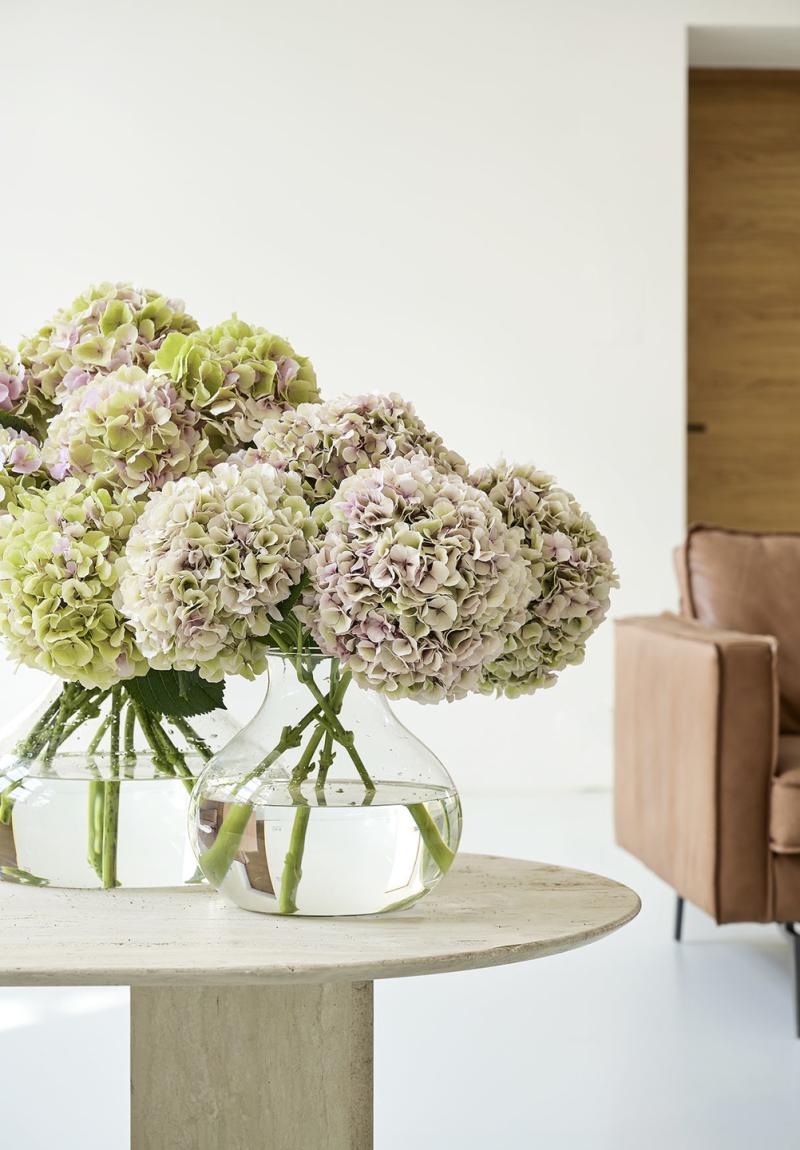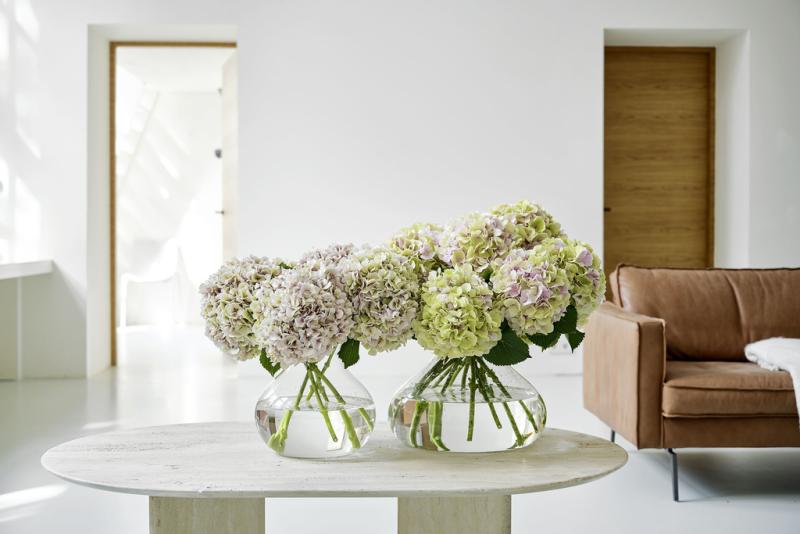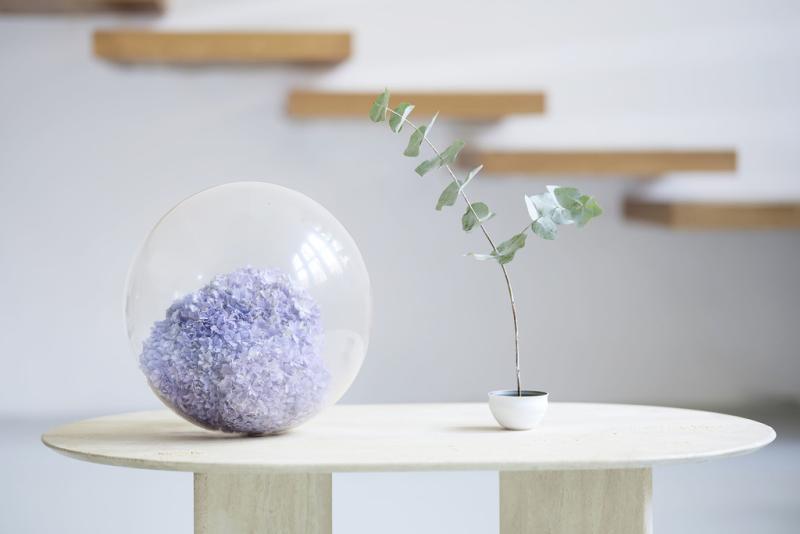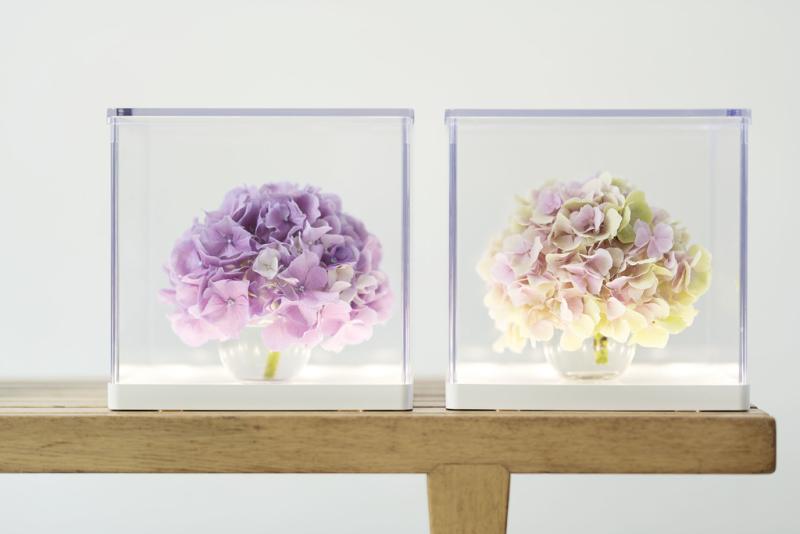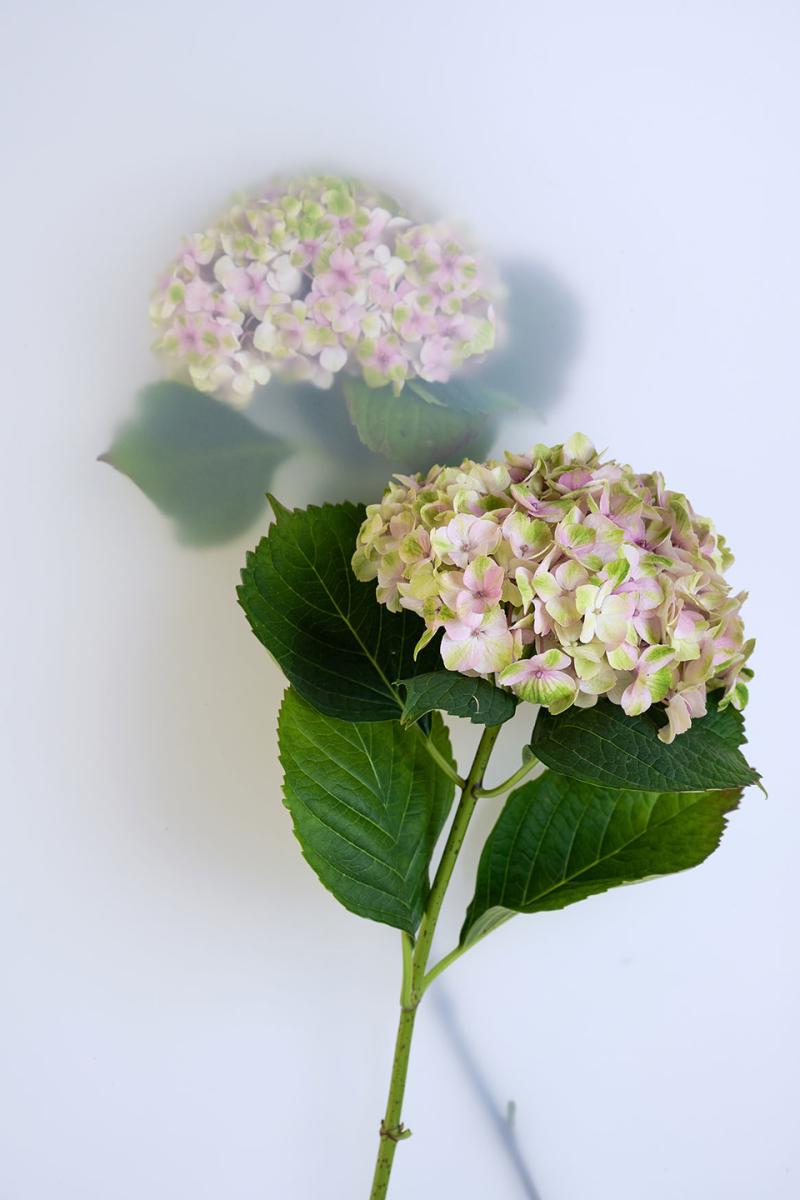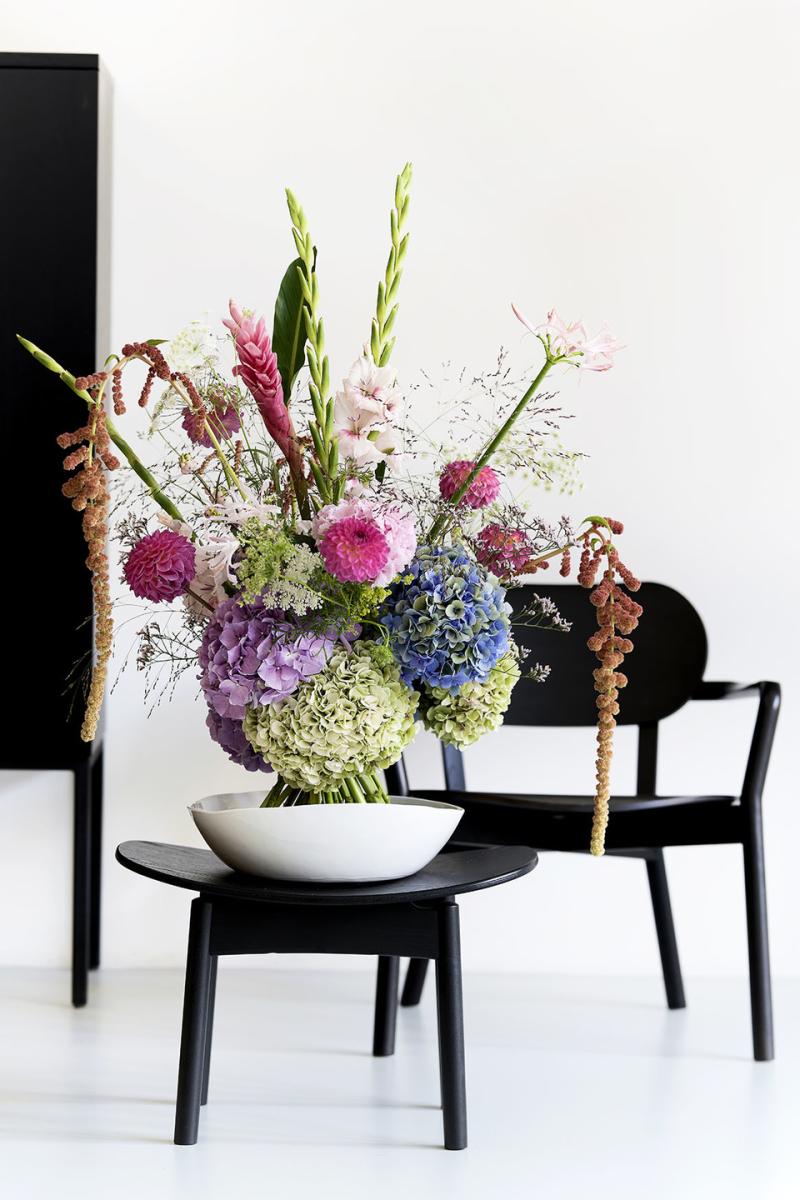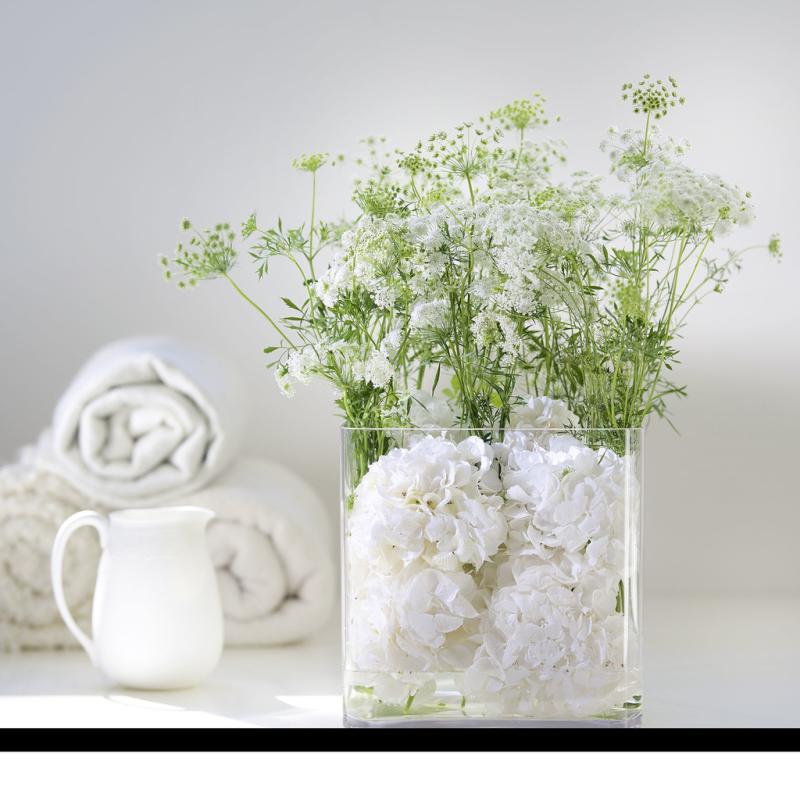Hydrangea: on the September Flower Agenda
Enormous flowers in white, pink or blue that change colour to autumnal shades of red, brown or green. Obviously we're talking about the hydrangea. This flower fits perfectly with September, the month in which summer cautiously gives way to autumn. That is why the flower is on the Flower Agenda this month. You can download inspiration images of the cut hydrangea at the bottom of this page and use them free of charge if you credit Funnyhowflowersdothat.co.uk.
Origin
The hydrangea is a member of the Hydrangeaceae family. The Latin name Hydrangea literally means water barrel’: ‘hydro’(water) and ‘angeion’ (barrel or jug). This plant originates from China and large parts of North and Central America and other regions in East Asia. The hydrangea symbolises grace, gratitude, beauty and abundance because of the extravagant number of flowers and the generous full shape. The name ‘hortensia’ which is used for the hydrangea in some languages was invented in 1771 by the French botanist Philibert Commerson.
Range
Flowers can reach a diameter of 25 cm, and the stems can be more than a metre long. The best-known hydrangea is Hydrangea Macrophylla. There are many cultivars of the species with pink, white, green, red, purple or blue inflorescences. The blue colour has been created by the grower by adding special substances to the water. There are flowers with even, intense colours, but also bicoloured varieties. The shape of the inflorescence is a sphere - the small flowers that make up the sphere can be single-flowered or double-flowered. Cut hydrangeas retain the colour from the time when they are harvested. They do not continue to change colour. You can choose for young, fresh flowers that have not changed colour, or colour-changed flowers that have already achieved autumnal shades. The further the colour of the hydrangea has changed, the longer its vase life. Many colour-changed hydrangeas are available in September. You can sometimes also encounter H. Macrophylla as cut foliage, which then has no flower. Other available species are H. paniculata (plume hydrangea) en H. arborescens with the well-known cultivar ‘Annabelle’.
What to look for when buying cut hydrangeas
- The stem length, ripeness and flower diameter.
- Also check whether it’s a fresh or colour-changed hydrangea.
- It’s important that the flower is free of pests and diseases such as botrytis.
- Check that the stem is firm, straight and not deformed.
- Make sure that you are not surprised: the same cultivar can look different from different growers. Light, nutrients and the age of the crop can heavily influence the colour and flower size. A current photo must therefore be included with the sale of these flowers.
Care tips for professionals
- Trim the stems diagonally with a clean, sharp knife or secateurs.
- Remove the leaves so that no leaves are left hanging in the water.
- Place the flowers in water immediately after trimming.
- Hydrangeas do not do well in a metal vase or bucket.
- Fill the vase with clean water and add cut flower food for shrub branches.
- Should the fresh flowers start to droop, remove them from the water, trim about 5 cm off diagonally and place them in a cool spot for a few hours until they are fully recovered. Alternatively you can use the Quick Dip which will have them proudly upright quickly. The Classic range has fewer problems with drooping, and also dries beautifully to last much longer as a dried flower.
Display tips for professionals
You can make attractive floral arrangements in September that you can leave to dry. For example, combine the Classic hydrangea with Sedum and Japanese anemone. You do not need to give this arrangement any water - it dries out beautifully and thereby has a very long vase life. You can make another richly floral display by combining hydrangea with delphiniums, dahlias, roses or carnations. Lots of impressive flowers together, although the hydrangea continues to play the leading role. You need seven to eight sizeable flowers for a wreath with a 30 cm diameter. Dismantle the flowers and make small sprigs that you insert all round the wreath. Combine with other autumn flowers such as Sedum, Physalis, rosehips and foliage materials such as Eucalyptus and Galaxy.
Care tips for consumers
- Trim a couple of centimetres off the stems diagonally with a clean, sharp knife.
- Remove leaves that will hang in the water.
- Fill the vase with clean water and add cut flower food.
- Hydrangeas do not like metal vases.
- Do not place the vase in a draught, in full sun, near a heater or beside the fruit bowl.
Inspiration & information
Inspiring images of every flower on the Flower Agenda have been produced in line with the Horticulture Sector Trends 2020 (Groenbranche Trends 2020). These trends are a translation of the latest consumer trends aimed at the horticulture sector.

